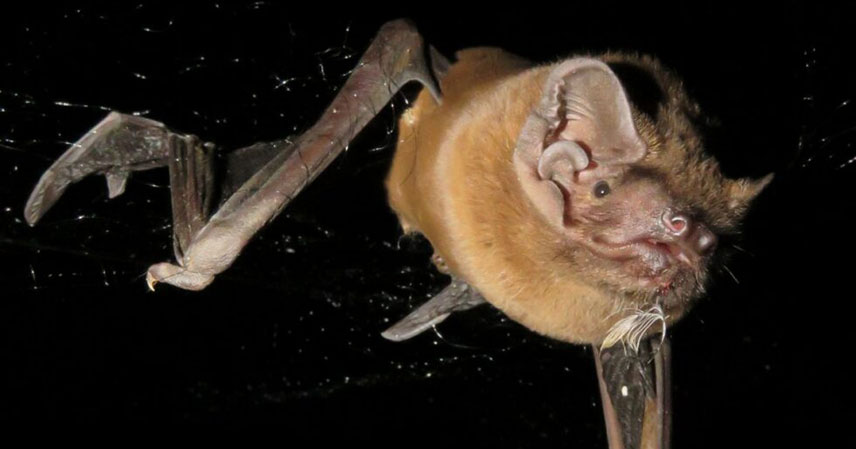The animal kingdom holds countless mysteries. One such enigma concerns a select group of bats. These nocturnal creatures are known bird predators. For years, scientists observed evidence of this unique diet. Feathers and avian remains in bat droppings confirmed it. Yet, the precise hunting tactics remained elusive. How could bats, typically insectivores, take down birds? Birds are often heavier, faster, and stronger. This question puzzled researchers for a long time.
Understanding these specialized hunters required groundbreaking research. It involved innovative technology and dedicated scientific effort. The recent findings reveal a fascinating and surprisingly brutal aspect of nature. They highlight the incredible adaptability of these winged mammals.
Unveiling the Nocturnal Predator 🦇
Among these avian predators is Nyctalus lasiopterus. This species is commonly known as the greater noctule bat. It holds the title of Europe’s largest bat. Its wingspan stretches to about 45 centimeters. This impressive size aids its aerial prowess. The bat typically weighs between 40 to 60 grams.
Its fur is a distinctive reddish-brown or chestnut. A slightly paler underside completes its appearance. Despite its relatively small weight, it is a formidable hunter. Understanding its life required innovative methods. This bat’s unique characteristics set it apart from its insect-eating relatives. Its presence in the European ecosystem is significant.
The Breakthrough in Bat Research 🔬
Unlocking the secrets of the greater noctule bat was a significant challenge. Traditional observation methods were insufficient. Researchers needed to track these elusive hunters directly. Elena Tena, a biologist, led this groundbreaking effort. She works at Doñana Biological Station in Seville, Spain.
Her team faced a critical hurdle. Any tracking device had to be incredibly light. Heavier sensors would impede the bats’ natural flight. This would skew research findings. They ultimately developed ultra-light sensors. These tiny devices provided unprecedented insights. They allowed scientists to observe the bats’ hunting behaviors. The findings, as described, were truly “jaw-droppingly brutal.” This technological leap was essential for the discovery.
The Brutal Reality of Avian Predation 🦅
The data from the sensors revealed a sophisticated hunting strategy. Greater noctule bats are aerial ambush predators. They likely use their advanced echolocation system. This allows them to detect birds in flight. Birds, unlike insects, do not produce echolocation echoes. This suggests a highly specialized sensory adaptation.
The bats must rapidly close in on their prey. Their large wingspan provides agility and speed. The “brutal” aspect likely refers to the mid-air capture. A bat, though smaller, possesses powerful jaws. Its sharp teeth are adapted for tearing. The struggle would be swift and decisive. This aerial combat is a true spectacle of nature. It highlights the incredible adaptability of bats. It demonstrates their mastery of the night sky.
Ecological Implications and Conservation Concerns 🌍
The discovery of these hunting methods offers crucial ecological insights. Greater noctule bats play a unique role. They are apex predators in their specific niche. Their diet includes both insects and birds. This dietary flexibility enhances their survival. It also contributes to ecosystem balance.
The impact on bird populations is likely localized. It primarily affects smaller, migratory species. Understanding such complex food webs is vital. It helps us appreciate biodiversity. These bats are generally found in old-growth forests. Their habitats are under pressure. Conservation efforts must protect these unique environments. Protecting bat populations benefits entire ecosystems. It ensures the health of these intricate natural systems.
Key Insights 💡
- Surprising Dietary Flexibility: Greater noctule bats, primarily insectivores, actively hunt and consume birds. This challenges common perceptions of bat diets.
- Advanced Hunting Techniques: The bats employ sophisticated aerial strategies. These involve precise echolocation and powerful mid-air capture. This adaptation allows them to prey on faster, larger avian targets.
- Ecological Significance: These bats are crucial aerial predators. They contribute to the balance of their ecosystems. Their presence highlights the complexity of food webs and predatory adaptations.
- Innovative Research Methods: The use of ultra-light sensors was key. This technology allowed scientists to observe previously hidden behaviors. It opens new avenues for wildlife research and discovery.
The research on Nyctalus lasiopterus is significant. It sheds light on a previously mysterious aspect of bat behavior. We now understand how these bats hunt birds. The findings underscore nature’s endless ingenuity. They remind us that even familiar creatures hold secrets. Further research will undoubtedly reveal more. It will deepen our appreciation for these vital nocturnal predators. The silent hunters of the night continue to amaze us.
Source: Bats eat the birds they pluck from the sky while on the wing



